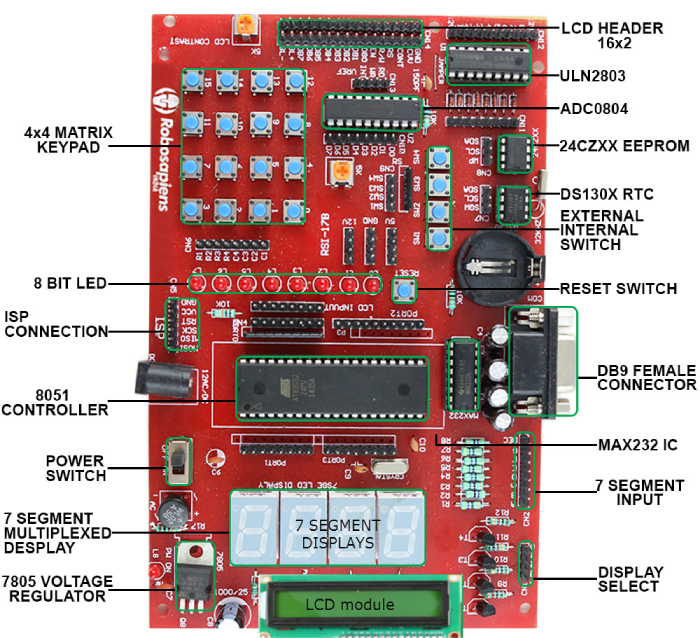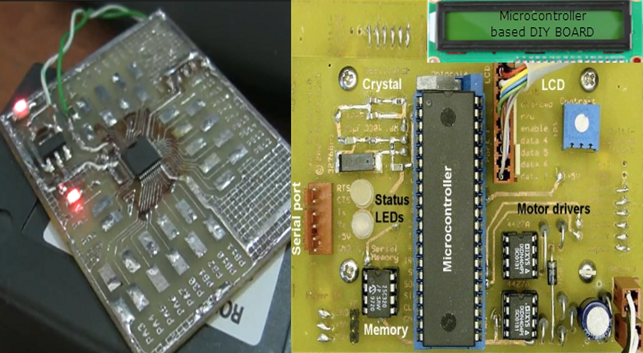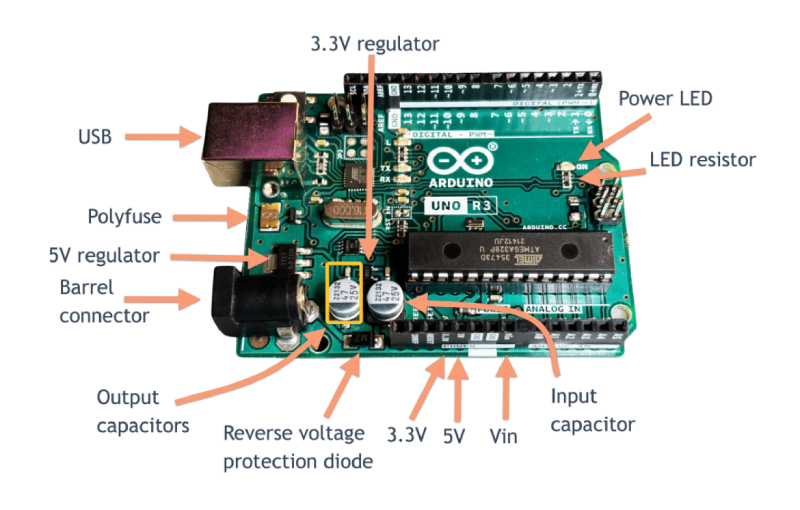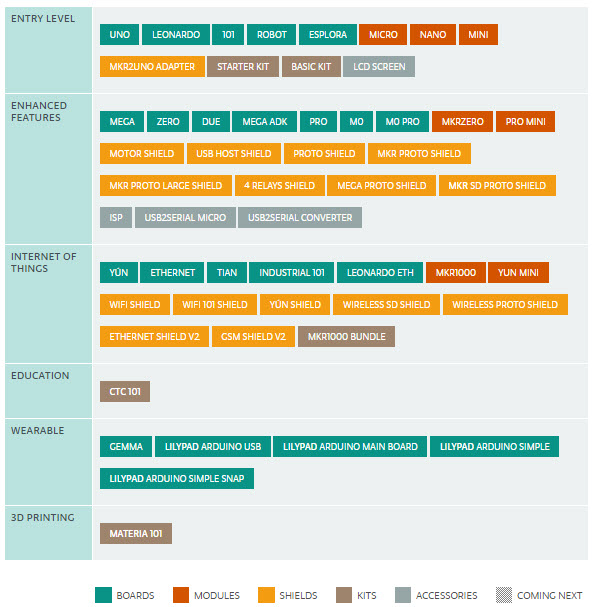

Types of Microcontroller Boards and Their Uses
Catalog
Specifications and Uses of Microcontroller BoardsDIY Microcontroller BoardsApplications of Microcontroller BoardsFeatures of Arduino UNOApplications of the Arduino UNO BoardRaspberry Pi Development BoardApplications of the Raspberry Pi Development BoardBeagleBone Black Development BoardApplications of the Adafruit Flora BoardConclusionTo begin working on embedded system development, two essential tools are needed: a development board and an IDE (Integrated Development Environment). A microcontroller development board is a printed circuit board (PCB) that includes the necessary hardware and components to make it easy to explore and experiment with a specific microcontroller’s capabilities.
These boards typically come equipped with a processor, memory, chipset, and built-in peripherals such as an LCD display, keypad, USB ports, serial interfaces, ADC (Analog-to-Digital Converter), RTC (Real-Time Clock), motor driver ICs, SD card slot, Ethernet port, and debugging tools. This integrated setup eliminates the hassle of manually wiring components with jumper cables, making development quicker and more reliable.

Specifications and Uses of Microcontroller Boards
Microcontroller boards are defined by several key specifications, including bus type, processor type, memory size, number and type of ports, and supported operating system. These specifications help determine how well a board can run and evaluate programs for embedded systems such as controllers, home appliances, robots, point-of-sale (PoS) terminals, kiosks, and other smart devices.
In this section, we'll explore the differences between various development boards used around the world. Each board has its own unique strengths and limitations, and some are better suited for specific types of projects than others.
A microcontroller development board, also known as a single-board microcontroller, is a compact system used for building embedded applications. Today, creating such development kits is both affordable and straightforward. With the wide availability of open-source IDEs (Integrated Development Environments), developers can easily program and test microcontroller boards for real-time applications.
In the following section, we’ll take a look at some of the different microcontroller boards currently available on the market.

A Microcontroller Board
DIY Microcontroller Boards
DIY (Do-It-Yourself) microcontroller boards can be assembled at home using individual electronic components. To build one, you'll need a microcontroller (such as Atmel, ARM, or MSP), a component base, and various external peripherals like an RTC (Real-Time Clock), serial ports, an LCD module, a keypad, or a touchpad. All these components must be carefully soldered onto a PCB (Printed Circuit Board).
Once the hardware is assembled, the next step is selecting a suitable IDE (Integrated Development Environment) to program the microcontroller and develop your desired application.

Microcontroller based DIY Board
Applications of Microcontroller Boards
Below are some example projects based on the 8051 microcontroller family. The 8051 is a general-purpose microcontroller commonly used for entry-level embedded applications. Typical uses include data acquisition systems, automatic light intensity control systems, and industrial temperature monitoring and control.
Arduino UNO
Arduino is one of the most popular open-source platforms for building interactive electronic projects. The Arduino UNO board includes all the essential components needed to operate and program the microcontroller, making it ideal for both beginners and experienced developers.
The Arduino UNO is widely regarded as one of the most beginner-friendly development boards and is often recommended as a starting point for learning microcontrollers. The UNO R3 version is particularly well-known for its simplicity, reliability, and flexibility. It is based on the ATmega328P microcontroller and serves as a powerful platform for rapid prototyping.

Features of Arduino UNO
- Microcontroller: ATmega328P
- Flash Memory: 32 KB
- Operating Voltage: 5V
- Recommended Input Voltage: 7–12V
- Input Voltage Limits: 6–20V
- Digital I/O Pins: 14 (6 support PWM output)
- Analog Input Pins: 6
- Max DC Current per I/O Pin: 40 mA
- Max DC Current for 3.3V Pin: 50 mA
One of the key reasons for the Arduino UNO’s widespread popularity is its open-source IDE, which allows users to write and upload code (known as sketches) using simple, beginner-friendly syntax based on the C programming language. This makes it easy to learn and ideal for both hobbyists and professionals.
In addition to the Arduino UNO, there are many other types of Arduino boards available, which we’ll explore below.

Applications of the Arduino UNO Board
One of the standout features of the Arduino UNO is its support for analog input/output pins. Based on the ATmega328P microcontroller, it is easy to program using the open-source Arduino IDE, which provides a wide range of predefined libraries and functions that simplify development.
Here are some popular applications developed using the Arduino UNO:
- RFID-Based Device Access Control System
- Industrial Appliance Control via GSM Using DTMF Signal Decoding
- Underground Cable Fault Detection System
- Home Automation Projects
Raspberry Pi Development Board
The Raspberry Pi is a small, credit card–sized computer that can be easily connected to a monitor, TV, or desktop display. It uses standard peripherals such as a keyboard and mouse, making it highly accessible—even to non-technical users. Many people use it for building digital media centers, home automation systems, and security camera setups.
The Raspberry Pi 3, in particular, is known for being both affordable and powerful, offering a compact computing platform for a wide range of DIY and professional applications.
(…and the paragraph can continue with more features or applications of Raspberry Pi 3.)
Key Features of Raspberry Pi 3
- Processor: 1.2GHz 64-bit quad-core ARMv8 CPU
- Wireless Connectivity: 802.11n Wi-Fi
- Bluetooth: Bluetooth 4.1 and Bluetooth Low Energy (BLE)
- Memory: 1GB RAM
- USB Ports: 4 × USB 2.0
- GPIO: 40 General Purpose Input/Output pins
- Video Output: Full-size HDMI port
- Audio/Video: Combined 3.5mm audio jack and composite video
- Camera Support: CSI (Camera Serial Interface)
- Display Support: DSI (Display Serial Interface)
- Storage: Micro SD card slot
- Graphics: VideoCore IV 3D graphics processor
These features make the Raspberry Pi 3 a versatile platform for a wide range of projects—from basic coding and education to media centers, IoT applications, and even lightweight desktop computing.
Software Capabilities of Raspberry Pi
The Raspberry Pi runs on a custom version of Debian Linux known as Raspbian. It supports the installation of a wide range of software packages, including Node.js, Java, Python, the LAMP stack (Linux, Apache, MySQL, PHP), and many more—making it a highly versatile development platform.
Applications of the Raspberry Pi Development Board
The Raspberry Pi can be used to create a fully functional mini computer, making it an excellent learning tool for students and beginners. It supports various programming languages like HTML, Java, and Python, allowing you to host a lightweight web server or even run WordPress to manage your own blog or website.
Additionally, the Raspberry Pi is widely used in robotics and industrial automation projects. Thanks to its powerful processing capability and extensive GPIO support, it’s an ideal platform for building IoT (Internet of Things) applications with minimal hardware.
BeagleBone Black Development Board
The BeagleBone Black is another popular open-source development board, now available with built-in wireless networking. Developed in collaboration with Octavo Systems and designed using CadSoft Eagle, the BeagleBone Black Wireless is one of the easiest credit card-sized Linux computers to use and customize for IoT applications.
This board is a low-cost, community-supported platform ideal for embedded system developers. It can boot Linux in just 10 seconds and get you started with development in under 5 minutes—requiring only a single USB cable.
BeagleBone Black Features
- Processor: AM335x 1GHz ARM Cortex-A8
- Memory: 512MB DDR3 RAM
- Storage: 2GB 8-bit eMMC on-board flash
- Accelerators: NEON floating-point accelerator and 2× PRU 32-bit microcontrollers
- Graphics: 3D graphics accelerator
Connectivity:
- USB client for power and communications
- USB host and Ethernet adapter
- HDMI output and 2× 46-pin headers
Software Compatibility:
- Linux
- Android
- Ubuntu
- Cloud9 IDE running on Node.js with the BoneScript library
Adafruit Flora Development Board
The Adafruit Flora is specifically designed for creating wearable electronics. It features a compact, disk-shaped, sewable form factor that is Arduino-compatible, making it perfect for wearable projects.
The latest version of the Flora board includes a micro-USB port for easy programming and comes with built-in Neopixel LEDs, which simplify testing and make project development more interactive and fun.
Features of the Adafruit Flora Board
- Powered by the Atmega32u4 microcontroller, also used in Arduino Mega and Leonardo
- Comes with an on-board polarized 2 JST battery connector
- Programmable and simulatable using the Arduino IDE
- Equipped with 14 sewing tap pads for easy attachment and electrical connections
- Includes an on-board voltage regulator
Applications of the Adafruit Flora Board
This board is perfect for wearable tech projects such as:
- Electromagnetic Field (EMF) Detecting Dress, which helps detect EMF signals to protect against radiation exposure
- Wearable Thermometer, an essential device for monitoring patient health
Conclusion
From the information above, we can conclude that different types of microcontroller boards serve a wide range of purposes—from building electronic gadgets to automating home appliances and more. We hope this overview has helped deepen your understanding.
If you have any questions or feedback, please feel free to share them in the comments below.
Here’s a question for you:
What are the key differences between the Arduino board and the Arduino Nano board?
Subscribe to JMBom Electronics !













